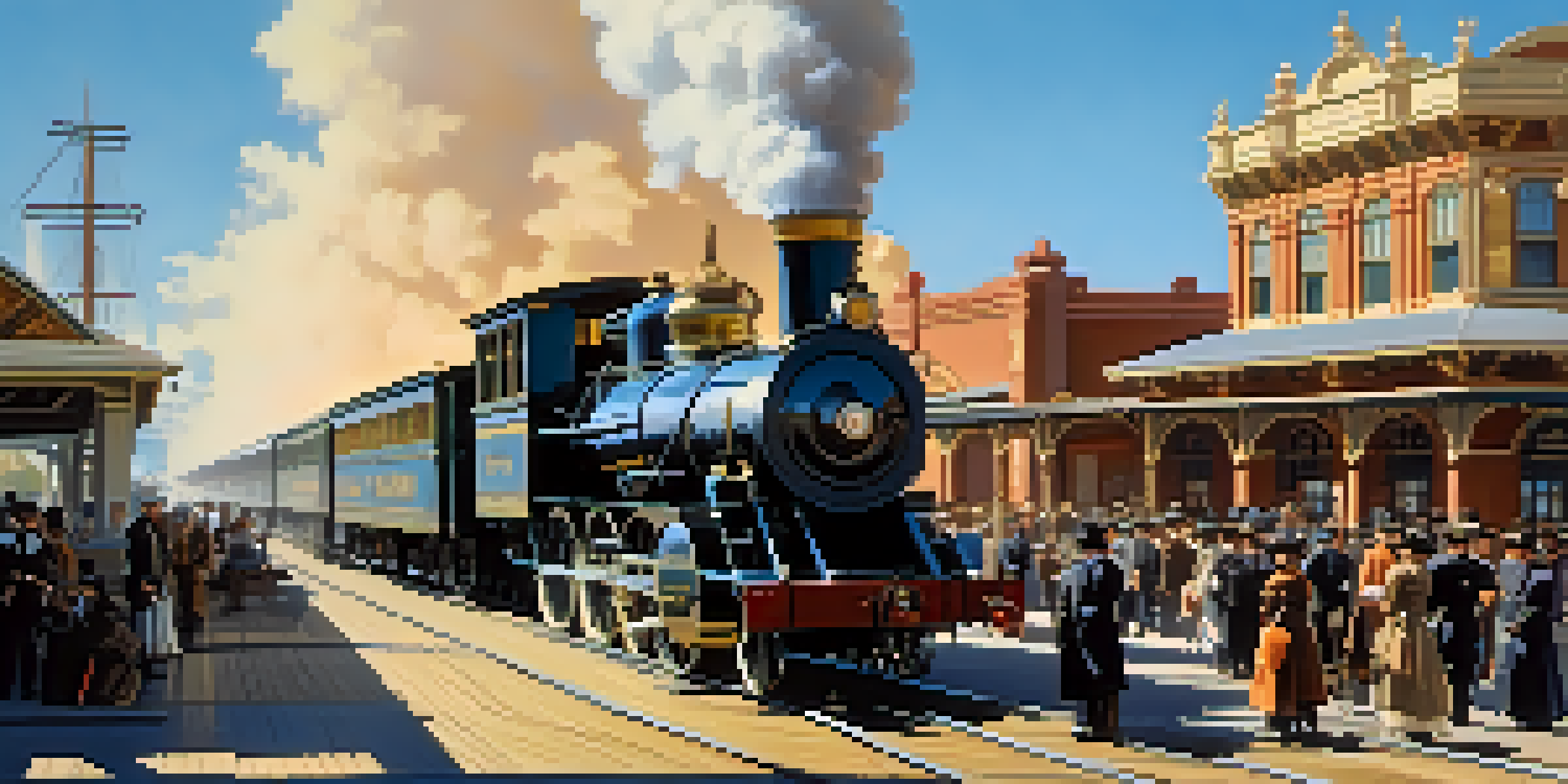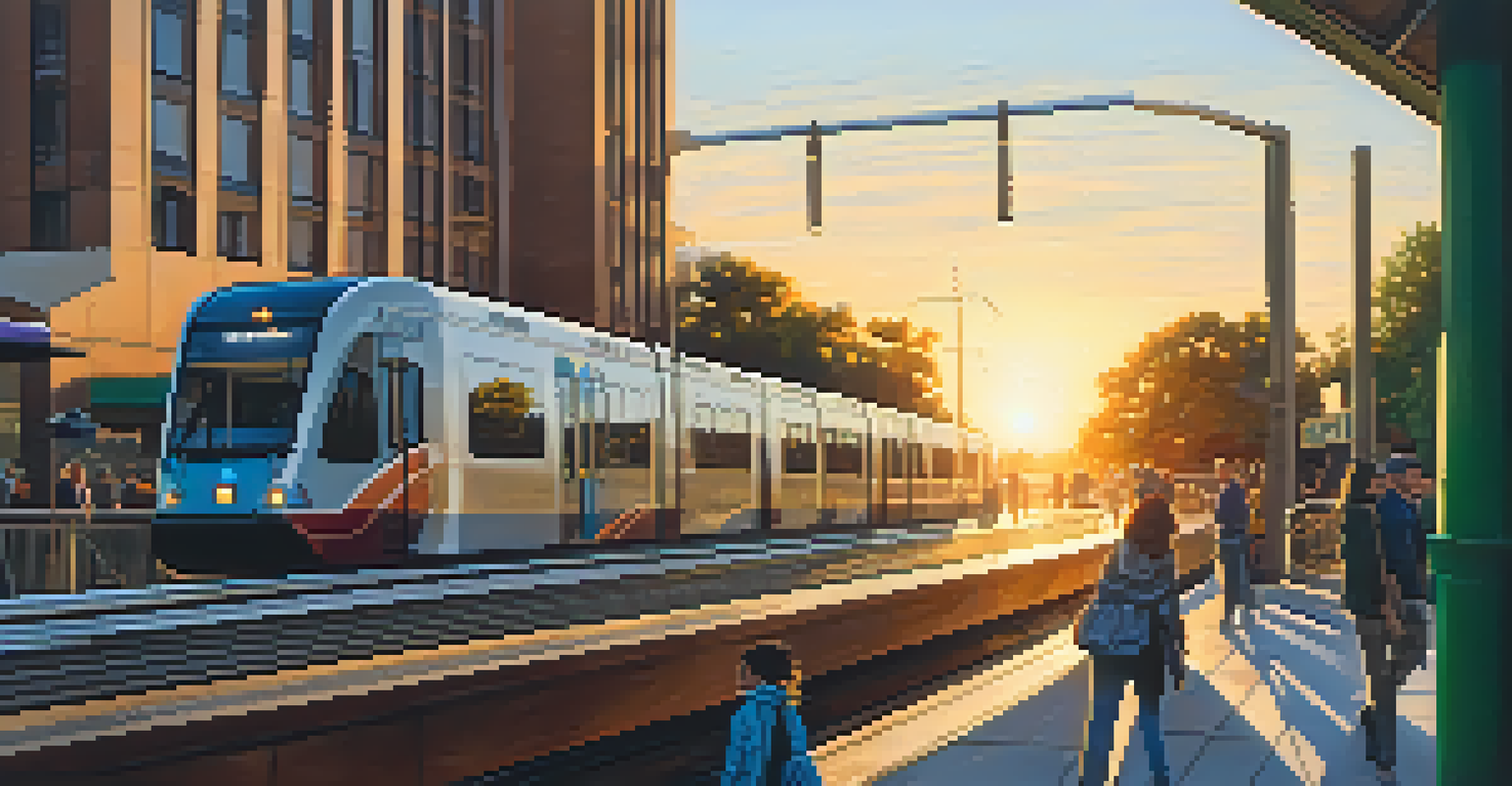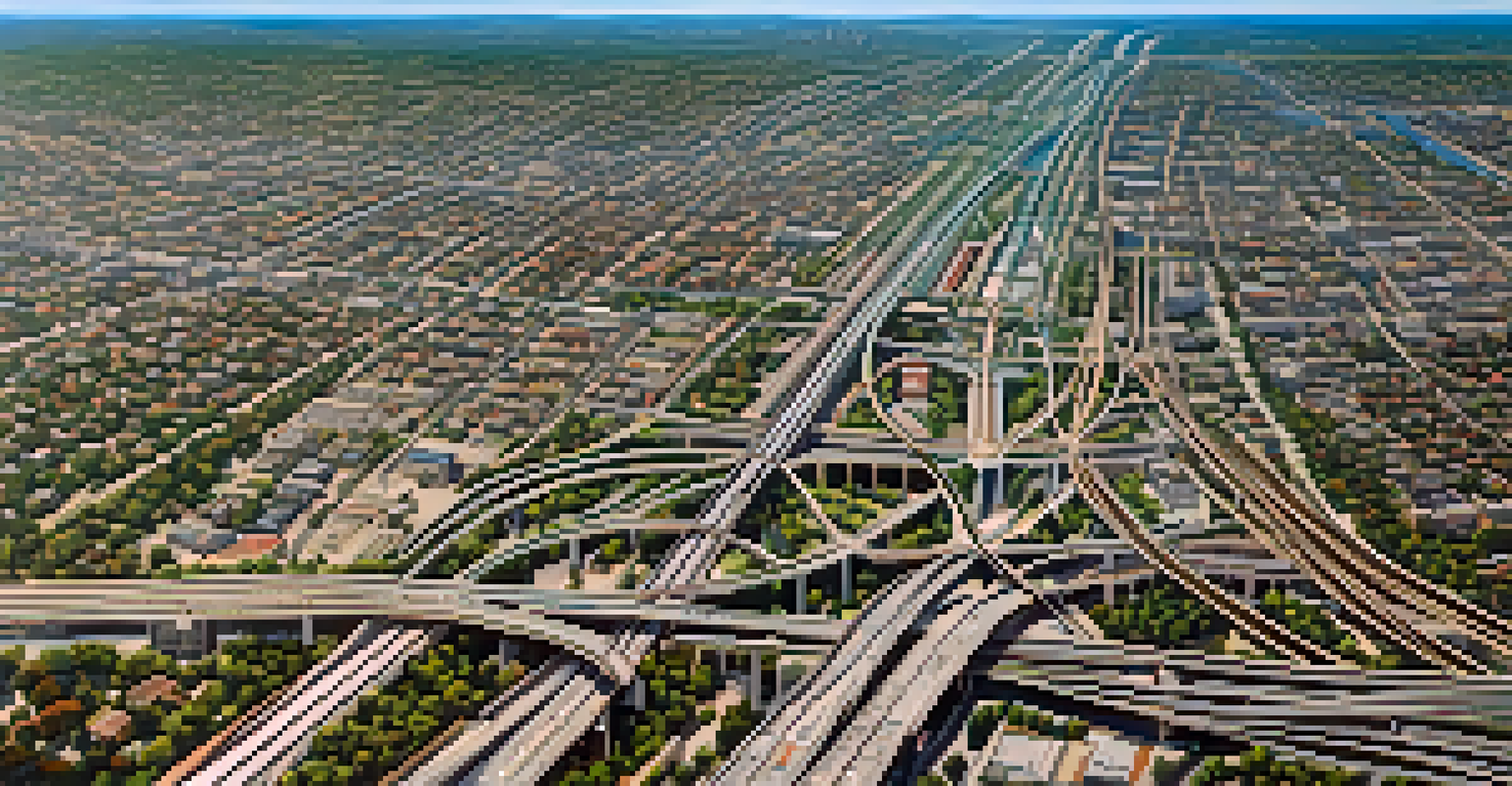The Evolution of Sacramento's Rail System: A Historical Overview

The Early Beginnings: Railroads in 19th Century Sacramento
Sacramento's rail journey began in the mid-1800s, a time when the Gold Rush was transforming California. The Central Pacific Railroad established its presence in 1865, connecting the city to vital trade routes and enabling the movement of goods and people. This initial connection not only boosted Sacramento's economy but also positioned it as a key transportation hub in the region.
The railroads are a great artery of the nation's commerce, and their importance cannot be overstated.
As railroads expanded, they became the lifeblood of Sacramento, facilitating the movement of agricultural products from the fertile Sacramento Valley to markets across the nation. The railroads allowed farmers to thrive, turning Sacramento into a bustling center of commerce. This growth sparked the construction of more rail lines, which further integrated the city into the national transport network.
However, the early years weren't without challenges; competition from river transport and the need for technological advancements often put pressure on the railroads. Nevertheless, the resilience of Sacramento's rail system laid the groundwork for future developments, setting the stage for more ambitious projects in the years to come.
The Golden Age: Expanding the Rail Network
The late 19th and early 20th centuries marked a golden age for Sacramento's rail system. During this period, numerous railroad companies emerged, each vying for a piece of the lucrative freight and passenger markets. Innovations like the steam engine and improved track designs allowed trains to operate more efficiently, making rail travel more accessible and reliable.

As the network expanded, so did the city's growth. Neighborhoods sprang up around train stations, and businesses flourished, creating a vibrant urban landscape that thrived on the railroads. People from various walks of life were drawn to Sacramento, lured by job opportunities and the promise of adventure, with the rail system serving as the artery of this burgeoning metropolis.
Sacramento's Rail System Evolution
From its 19th-century beginnings, Sacramento's rail system has transformed through various stages, adapting to economic changes and technological advancements.
However, this rapid expansion also brought about challenges, including overcrowding and the need for better infrastructure. City planners began to recognize the importance of a cohesive transport strategy, leading to discussions about how to modernize and adapt the rail system to meet the demands of a growing population.
The Impact of World War II on Sacramento's Rail System
World War II was a transformative period for Sacramento's rail system, as the demand for military supplies skyrocketed. Railroads became crucial for transporting troops and materials, leading to increased investments in infrastructure and technology. The city’s rail lines were vital in supporting the war effort, showcasing their importance beyond just civilian transport.
Public transportation is the backbone of a city’s economy, providing accessibility and mobility for all its residents.
As a result of this surge, Sacramento saw a significant upgrade in its rail facilities, including the expansion of freight yards and the introduction of more efficient locomotives. These enhancements not only improved the city's logistical capabilities but also positioned it as a strategic asset in the national defense network. The railroads operated around the clock, emphasizing their role as a backbone of wartime operations.
After the war, however, the rail system faced new challenges, as the rise of automobiles and highways began to shift the transportation landscape. While railroads had proven their value during wartime, the post-war era demanded adaptation to remain relevant in a changing world.
Decline and Resurgence: The Changing Role of Railroads
The latter half of the 20th century saw a decline in Sacramento's rail system, primarily due to the rise of the automobile and the expansion of the interstate highway system. Many rail lines were abandoned or repurposed, and passenger services dwindled as people turned to cars for their daily commutes. This transition left a notable impact on the city's transport dynamics, leading to increased traffic congestion and reliance on personal vehicles.
Despite these challenges, there was a growing recognition of the benefits of rail travel, especially concerning sustainability and reducing urban congestion. In the 1990s, Sacramento began revitalizing its rail system, focusing on commuter rail services and light rail options to meet the needs of a modern city. This resurgence was driven by a desire to create a more integrated transport network that could reduce environmental impact while improving mobility.
Modern Light Rail Enhancements
Today, Sacramento's extensive light rail system provides efficient public transportation, connecting neighborhoods and supporting local businesses.
The renewed focus on rail has allowed Sacramento to reestablish itself as a leader in public transportation, demonstrating that rail systems can work hand-in-hand with modern urban needs. The city's commitment to sustainable transport options reflects a broader trend toward embracing public transit as a solution to contemporary challenges.
Modern Innovations: Sacramento's Light Rail System
Today, Sacramento boasts an extensive light rail system that connects various neighborhoods to the downtown area and beyond. Introduced in the early 1980s, this modern transit option has become a vital component of the city's public transportation network, providing residents with a reliable and efficient means of travel. The light rail system has helped reduce traffic congestion while promoting eco-friendly commuting options.
With multiple lines running through the city, the light rail has made it easier for residents to access work, education, and entertainment without relying on cars. This accessibility has not only enhanced the quality of life for many citizens but also supported local businesses by increasing foot traffic in commercial areas. The convenience of light rail has encouraged a shift in how people perceive public transport.
Moreover, the ongoing investments in infrastructure and technology continue to improve the system, including real-time tracking and better connectivity with other transit options. As Sacramento's population grows, the rail system's role will only become more critical, ensuring that the city remains a vibrant and connected community.
Challenges Ahead: Balancing Growth and Sustainability
As Sacramento's rail system evolves, it faces the ongoing challenge of balancing growth with sustainability. The city is experiencing rapid population growth, which puts pressure on existing transport networks and infrastructure. Policymakers and planners are tasked with ensuring that the rail system can accommodate this growth while minimizing environmental impacts.
This challenge is compounded by the need to maintain funding for upgrades and expansions, especially in an era of budget constraints. Community support becomes essential, as local residents must advocate for continued investments in public transit. Engaging with the community through discussions and outreach can help secure the necessary backing for future projects.
Future Challenges and Innovations
As the city grows, Sacramento's rail system faces the challenge of balancing expansion with sustainability, while embracing new technologies for improved service.
The integration of green technologies and sustainable practices into the rail system is also a crucial focus. By prioritizing eco-friendly solutions, Sacramento can position itself as a model for other cities facing similar challenges. The future of the rail system will depend on its ability to adapt to changing needs while remaining committed to sustainability and the well-being of its residents.
The Future of Sacramento's Rail System: Looking Ahead
Looking ahead, Sacramento's rail system is poised for exciting developments that promise to shape the future of transportation in the region. Plans are already underway to expand light rail services further, connecting underserved areas and enhancing accessibility for all residents. These expansions are designed to meet the growing demand for efficient public transport options in an expanding urban environment.
Moreover, emerging technologies, such as automated trains and smart ticketing systems, are on the horizon, which could revolutionize the way people interact with the rail system. These innovations not only improve the user experience but also enhance operational efficiency, making public transportation more appealing to a diverse range of users.

Ultimately, the future of Sacramento's rail system will depend on collaboration among city planners, transportation authorities, and the community. By working together, they can ensure that the rail system remains a crucial element of the city's identity, enhancing connectivity, promoting sustainability, and enriching the lives of all residents.